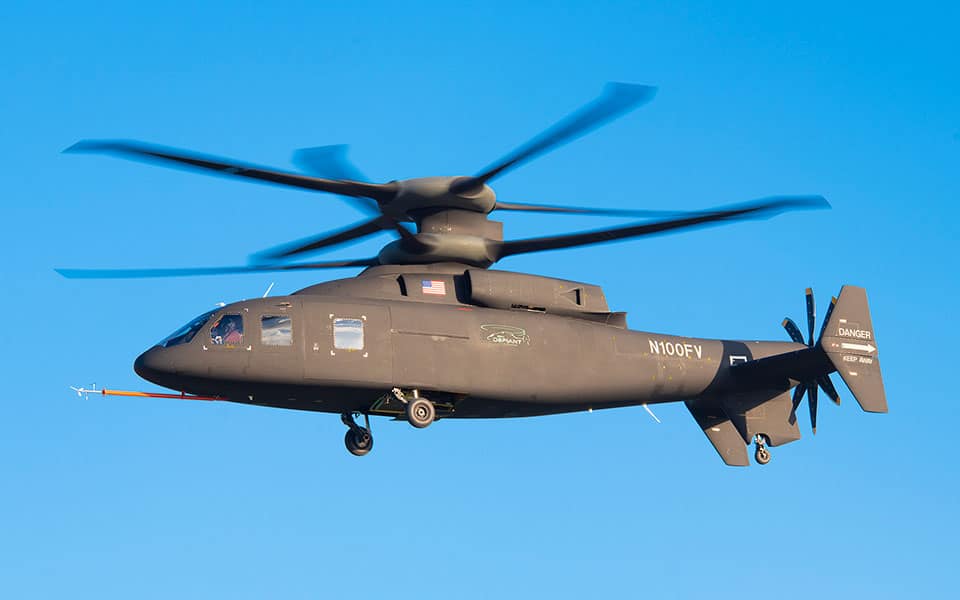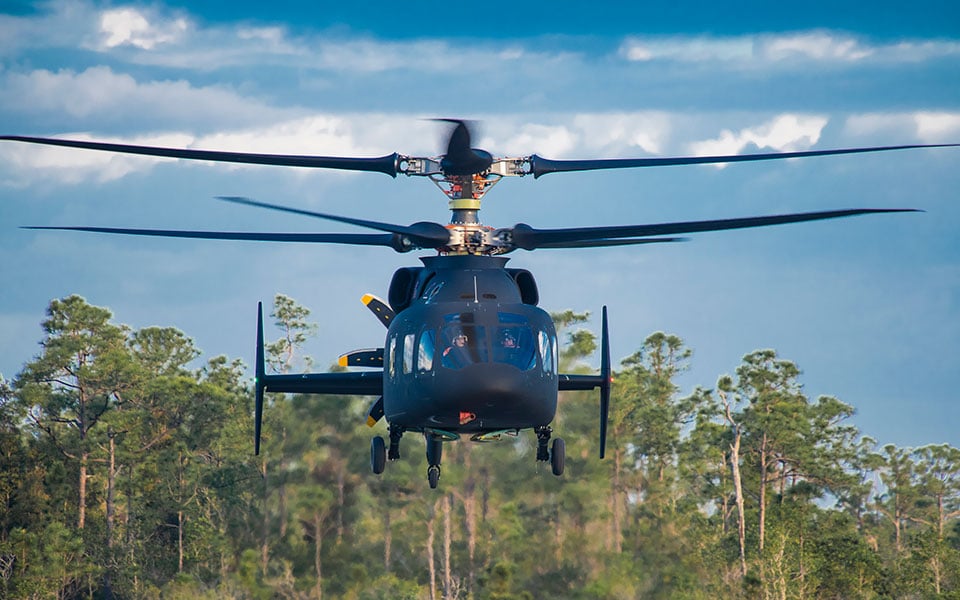Sikorsky Aircraft and Boeing have developed their next-generation compound helicopter, and flight testing is underway to determine if the aircraft is capable of entering the U.S. military fleet.
Nicknamed the “Defiant,” the new Joint Multi-Role (JMR) SB-1 helicopter was revealed at the Association of the United States Army Annual Meeting & Exposition in 2016. The prototype took its first flight in March 2019
Check out the Defiant taking a flight in front of a crowd at the William P. Gwinn airport in West Palm Beach, F.L., Feb. 20, 2020:
Conceived as a next-generation replacement for the UH-60 Black Hawk and AH-64 Apache, SB-1 is being pursued along with the Bell Helicopter V-280 for the U.S. Army’s JMR program. The program funds competing X-planes as a precursor to a Future Vertical Lift (FVL) acquisition.
Future Vertical Lift-Medium was a new-start project in the Army’s fiscal year 2017 budget submission, and an acquisition plan is being considered by the Pentagon. SB-1 and V-280 are proof-of-concept demonstrators, but each side is continuously refining their ultimate FVL proposals as the technology as well as the Army’s requirements and mission needs mature.

Boeing-Sikorsky SB-1 Defiant prototype helicopter. (Boeing/Released)
Weighing in at 13.6t, SB-1 has enough carrying capacity to transport four aircrew and 12 fully equipped troops in high-hot environments. The compound aircraft is controlled by rigid coaxial rotors. Compared to conventional helicopters, the counter-rotating coaxial setup and pusher propeller offer a significant speed increase, a 60 percent combat radius extension, and 50 percent better performance.
For now, the concept aircraft is powered by two Honeywell T55 engines. In the future, a new engine, the Future Affordable Turbine Engine (FATE), is set to be utilized instead in order to meet the range requirement of 229 nmi (264 mi; 424 km). A number of other requirements from the U.S. Army have also influenced the aircraft’s production. Coupled with technological advancements, the final SB-1 may include a number of new features and capabilities not yet discussed.

Boeing-Sikorsky SB-1 Defiant prototype helicopter. (Boeing/Released)
Sikorsky–Boeing says the final production SB-1 will be quick and nimble, with fast acceleration and deceleration, fast side-to-side movement, and the capability to hover with the tail up and nose down.
Here’s more about the SB-1’s design and capabilities in the concept video below:



